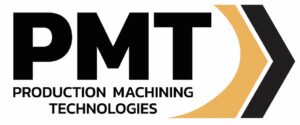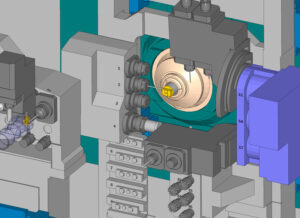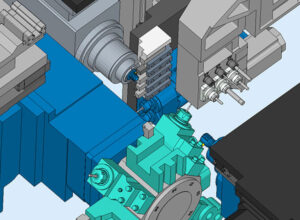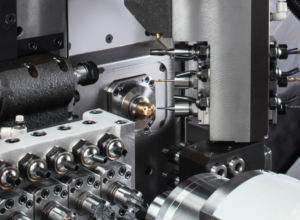The evolution of CNC (Computer Numerical Control) technology has profoundly transformed the manufacturing landscape, offering unprecedented precision and efficiency in producing complex components. Among the advancements, 5-axis CNC milling stands out as a pivotal development, enabling manufacturers to achieve intricate designs that were once deemed impossible. This guide delves into the world of 5-axis CNC milling, exploring its technology, benefits, and the critical role of Hexagon Esprit in optimizing these systems
What is 5-Axis CNC Milling?
5-axis CNC milling involves a sophisticated cutting machine that can maneuver a tool or piece along five different axes simultaneously. This advanced capability enables the production of complex geometric shapes with high efficiency and precision. Unlike traditional 3-axis machines that move in linear paths along the X, Y, and Z axes, 5-axis machines introduce two additional rotary axes. These axes, often referred to as the A-axis (rotation around the X-axis) and the B-axis (rotation around the Y-axis), allow the tool to approach the workpiece from multiple angles simultaneously in a single setup.
The versatility of 5-axis CNC milling machines allows for the creation of intricate and sophisticated designs that are otherwise challenging or impossible to achieve with traditional machinery. Examples of such complex geometric shapes include:
- Aerospace components such as turbine blades, which feature curved profiles and intricate cooling ducts.
- Automotive parts like crankshafts and camshafts, which require precise, curved cuts for functionality.
- Medical devices, including orthopedic implants like hip joints and spinal devices, which need exacting contours to match the complex shapes of human bones.
Mechanics of 5-Axis Machines: A Closer Look
The primary benefit of 5-axis machines is their ability to tilt and rotate the tool away from conventional angles, which enhances precision and access to intricate part geometries. This functionality reduces the need for multiple setups, thereby minimizing handling errors and increasing production efficiency.
Example: Manufacturing a Jet Engine Impeller
Consider a jet engine impeller, which features complex curved surfaces and tight radial features. On a 3-axis machine, this component would require multiple setups and repositioning to access all surfaces, risking inaccuracies with each move. However, a 5-axis machine can tilt the impeller and simultaneously rotate it, allowing the cutting tool to access those hard-to-reach areas in one seamless process. This capability not only speeds up the manufacturing process but also significantly enhances the final product's precision and quality.
Example: Lightweight Aeronautics Structures
Another important application involves creating lightweight structural components. Aerospace engineers continually seek ways to reduce weight to increase fuel efficiency and payload capacity. 5-axis milling allows for the creation of components with advanced lightweight materials, such as titanium alloys, by facilitating intricate subtractive processes that remove material where it is not needed without compromising structural integrity.
Example: Custom Automotive Gears
Creating a custom automotive gear includes intricate internal cutouts and precise gear teeth angles. With 5-axis milling, the gear can be held stationary while the cutting tool operates at various angles to machine the internal features without interference from the tool itself or the machine's components. This process eliminates the need for special fixtures or additional tooling setups, streamlining production and reducing costs.
Example: Internal Combustion Engine Block
Engine blocks are a crucial component of automotive engines, serving as the structural framework that houses cylinders and other engine parts. Manufacturing engine blocks using 5-axis CNC milling allows for the precise creation of the complex internal channels and cavities required for coolant flow, oil passages, and housing engine components. The precision and ability of 5-axis machines to handle multiple complex operations simultaneously not only ensure the structural integrity of the engine block but also optimize the flow paths for fluids, which is critical for engine performance and longevity. This process enhances both the production efficiency and the operational reliability of the automotive engines.
Example: Orthopedic Implants
Orthopedic implants such as hip and knee joints are often produced using 5-axis milling. This is done to ensure they precisely conform to the complex shapes required for a natural fit in the body. This precision is vital not only for the implant's performance but also for minimizing the patient's recovery time. It also helps to reduce patient pain, maximizes the functionality of the implant, and makes it more durable. Without the advantages of modern 5-axis machining, implant life expectancy would be drastically reduced.
Example: Surgical Instruments
In addition to implants, 5-axis milling is used to create specialized surgical instruments. These tools often have unique designs tailored to specific surgical procedures, requiring precise cuts and angles that are only possible with advanced CNC technology. The ability to produce these complex instruments quickly and accurately can significantly enhance the effectiveness of surgeries and patient outcomes.
Advantages of 5-Axis Milling
Enhanced Geometric Freedom
One of the most significant advantages of 5-axis CNC milling is the geometric freedom it provides. Machinists can create shapes with undercuts, deep pockets, and complex contours without multiple setups, which is not feasible with 3-axis machines.
Improved Surface Finish
With 5-axis milling, the tool can maintain an optimal angle with the surface, which results in a better surface finish. This is particularly beneficial for high-specification industries like aerospace and automotive, where precision is crucial.
Reduced Setup Time
The ability to complete a component in a single setup not only speeds up production but also reduces the potential for errors that can occur each time a piece is repositioned in traditional methods.
CAM Software Overview: Hexagon Esprit's Role
Integration with 5-Axis Machines
Hexagon Esprit stands out in the realm of CAM (Computer-Aided Manufacturing) software due to its robust integration capabilities with 5-axis CNC machines. This software not only simplifies the complex programming required for multi-axis operations but also enhances the efficiency and precision of these machines. By providing advanced milling strategies, Esprit helps manufacturers optimize the execution of tool paths, which is crucial for reducing cycle times and maximizing the productivity of machine operations.
Advanced Milling Strategies Explained
Esprit offers a variety of milling strategies tailored for 5-axis machines, including simultaneous 5-axis contouring, swarf milling, and multi-axis roughing and finishing. These strategies enable the tool to maintain optimal cutting conditions across the surface of the part, which can be particularly beneficial for complex geometries like those found in aerospace and automotive components. For example, swarf milling allows the side of the tool to maintain contact with a surface, ideal for machining the tall and thin walls of aerospace casings without multiple passes.
Toolpath Optimization
Toolpath optimization in Esprit involves the software automatically calculating the most efficient route for the tool to travel, minimizing air cuts and unnecessary movements. This capability not only speeds up the production process but also extends both the tool's and the machine's life by avoiding excessive wear. The software's ability to generate smooth and harmonious movements translates into higher-quality finishes and less mechanical stress on the machine.
Simulation Capabilities
Hexagon Esprit's simulation tools are a critical aspect of its functionality, offering powerful virtual testing of CNC tool paths. This simulation environment allows manufacturers to visualize the entire machining process, from initial tool engagement to final part completion. By identifying potential collisions and errors before actual machining begins, Esprit significantly reduces the risk of expensive downtime and material wastage due to programming errors.
Real-Time Adjustment and Feedback
The simulation feature not only detects issues but also provides real-time feedback and adjustment options. This means that operators can tweak tool paths and check the implications of any changes instantly, ensuring optimal machining conditions are maintained throughout the process. The ability to simulate different machining scenarios also helps in planning the best approach for complex parts, thereby enhancing overall operational efficiency.
Verification of Complex Geometries
For parts with complex geometries, Esprit’s simulation tools are invaluable. They allow the operator to verify that the tool can indeed reach all designed features without interference, which is particularly crucial in industries where precision is paramount, such as in medical implants and high-performance automotive components. This verification process ensures that the final product will meet stringent quality standards with minimal physical testing required.
The Future of 5-Axis Milling
The future of 5-axis CNC milling holds promising advancements that are poised to redefine the manufacturing industry. As technology evolves, the integration of artificial intelligence (AI) and machine learning into 5-axis milling machines is anticipated to significantly enhance their capabilities. This integration aims to streamline machining processes, improving not only the speed and precision of operations but also enabling these machines to make intelligent decisions about tool paths and machining strategies based on real-time data. This could lead to more efficient use of materials and tools by reducing waste and increasing the overall lifecycle of the machinery.
Moreover, AI-enhanced systems are expected to provide predictive maintenance insights, which can proactively identify potential mechanical failures before they occur. This predictive capability ensures machines have less downtime and can operate at optimal efficiency for longer periods, ultimately increasing production uptime and reducing costly interruptions.
Sustainability is another key area of focus in the evolution of 5-axis CNC milling. As global environmental awareness grows, the manufacturing sector is under increasing pressure to adopt greener practices. 5-axis CNC technology is at the forefront of this shift, offering significant reductions in material waste. By enabling precise cutting that maximizes material utilization, 5-axis machines ensure that less raw material is wasted during the production process, which is not only cost-effective but also environmentally beneficial.
Additionally, the ability of 5-axis machines to complete complex parts in fewer setups reduces the energy required per piece, thereby decreasing the overall energy consumption of manufacturing operations. The consolidation of multiple manufacturing processes into fewer operations also lessens the carbon footprint associated with producing complex parts.
Emerging trends also highlight the development of more energy-efficient machine designs and the use of sustainable materials within the machines themselves. These advancements support the manufacturing industry's goals of reducing environmental impact and promoting sustainability in production processes.
If you're ready to start reviewing the power of 5-axis milling for your business please reach out to us! We're here to help.



